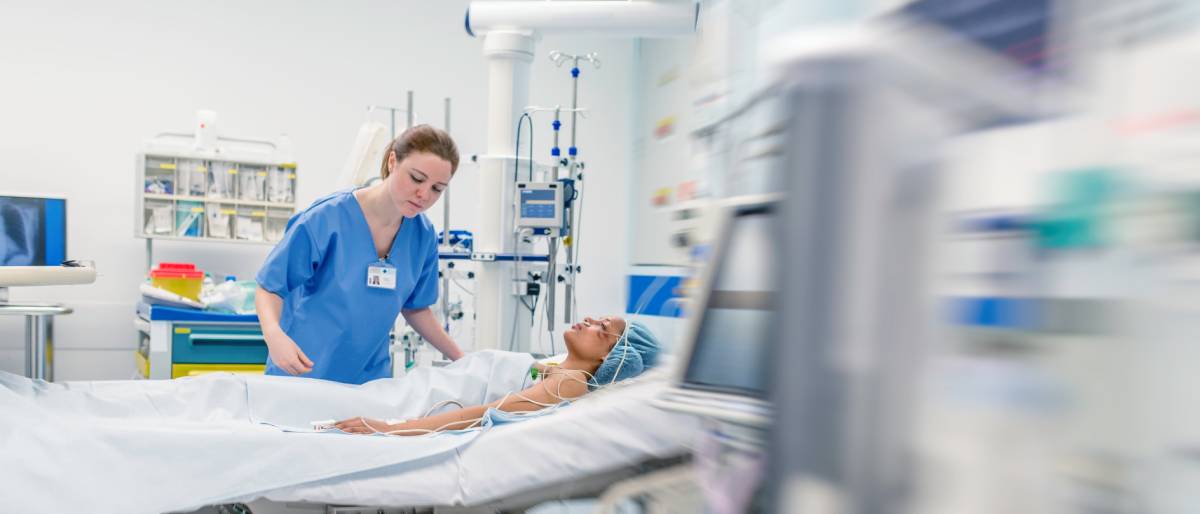Patient positioning in the perioperative setting is extremely important. While positioning before and during surgery is often discussed, an important aspect of patient care in a procedural setting is patient positioning after surgery and anesthesia. Proper positioning can help prevent various complications such as respiratory distress, circulatory issues, and pressure injuries (Patterson et al., 2024). As anesthesia wears off, patients may experience muscle weakness, shallow breathing, and discomfort. In addition, positioning after surgery and anesthesia must consider the wound site and the risk of nausea and vomiting.
Positioning after surgery and anesthesia can be crucial in patients with postoperative hypoxemia. Postoperative hypoxemia is a condition characterized by low levels of oxygen in the blood. Complications of postoperative hypoxemia include arrhythmias, abnormal blood pressures, and damage to the nervous system (Wang et al., 2024). At the end of a procedure, the supine position is commonly used for extubation. However, in the supine position, the capacity of the lungs is decreased. The semi-recumbent position, where a patient is slightly sitting upwards, is another position that can be used in extubation as it has been shown to increase lung capacity (Wang et al., 2024). In a randomized clinical trial, patients who were positioned in a 30-degree semi-recumbent position during extubation had a lower incidence of hypoxemia (Wang et al., 2024). This may be because diaphragm function improves in the semi-recumbent position compared to the supine position.
Proper circulation after surgery and anesthesia is also an important concern that can be addressed through careful patient positioning. Immobility during and after surgery can increase the risk of blood clots such as deep vein thrombosis. If available, sequential compression devices can reduce risk (SCDs) (Kreutzer et al., 2016). Furthermore, patients should be encouraged to ambulate and move as soon as possible postoperatively. This also helps prevent deep vein thrombosis from occurring (Kreutzer et al., 2016).
The lithotomy position is used during gynecologic, rectal, and urologic surgeries. In this position, patients lie supine with their legs abducted from the midline and knees flexed. However, there are risks with this positioning, like nerve compression. At the end of a procedure, it is important to remove a patient from this position prior to extubation and return them to a supine position to increase lung compliance (Armstrong & Ross, 2022). Following neurosurgery, patients may be placed with their heads elevated to minimize swelling.
Patient positioning after surgery and anesthesia can also affect postoperative nausea and vomiting. Positional changes, especially as a patient is waking up from anesthesia or being transferred, can affect patients who are prone to motion sickness (Patterson et al., 2024). Patients who are sitting rather than supine, even during surgery, have a lower incidence of postoperative nausea and vomiting (Patterson et al., 2024).
Ultimately, positioning after surgery and anesthesia is a critical aspect of recovery. It aids in improving breathing, circulation, and discomfort while reducing the risk of complications including pressure ulcers and respiratory distress. By paying close attention to positioning, healthcare providers can significantly contribute to a smoother and more successful recovery for their patients.
References
Armstrong, Maggie. and Ross A. Moore. “Anatomy, Patient Positioning.” StatPearls, StatPearls Publishing, 31 October 2022.
Wang, Xinghe et al. “Semirecumbent Positioning During Anesthesia Recovery and Postoperative Hypoxemia: A Randomized Clinical Trial.” JAMA network open vol. 7,6 e2416797. 3 Jun. 2024, doi:10.1001/jamanetworkopen.2024.16797
Patterson, Heather et al. “Patient positioning and its impact on perioperative outcomes in children: A narrative review.” Paediatric anaesthesia vol. 34,6 (2024): 507-518. doi:10.1111/pan.14883
Kreutzer, Lindsey et al. “JAMA PATIENT PAGE. Preventing Venous Thromboembolism After Surgery.” JAMA vol. 315,19 (2016): 2136. doi:10.1001/jama.2016.1457
